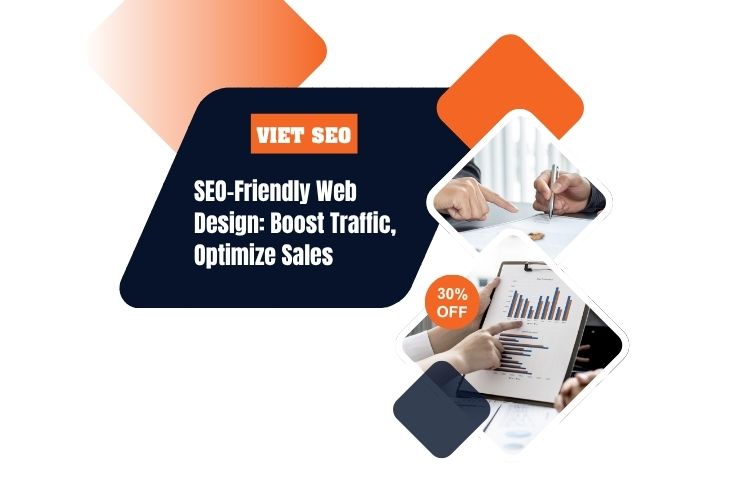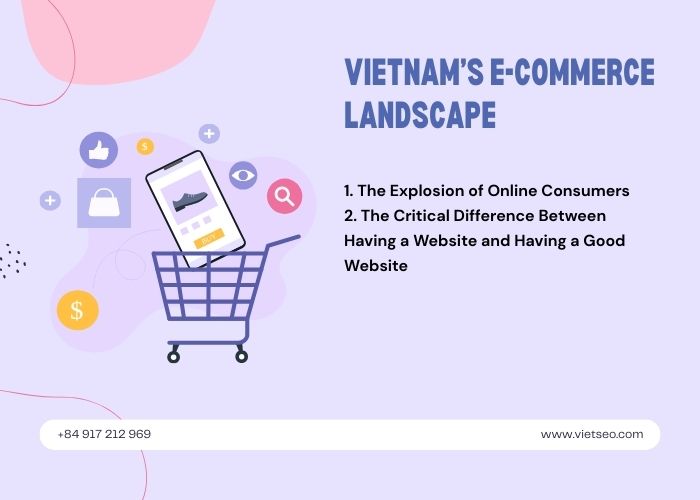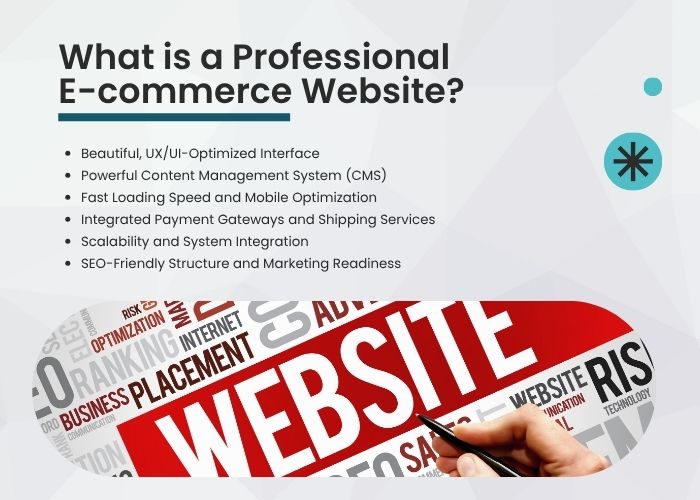SEO-Friendly Website Design Services: From Concept to Real Business Results
You can invest heavily in a stunning interface and spend generously on advertising, but if your website is not SEO-friendly, your ability to reach organic customers via Google (and other search engines) will be extremely limited. This is why SEO-friendly website design services are increasingly becoming a vital component of a company’s online growth strategy.
In this article, we will explore SEO-friendly website design from a practical and strategic perspective:
- Not just about technical aspects,
- Not just about design,
- But as a key part of the overall digital business ecosystem.
What is a truly SEO-friendly website?
1. SEO-friendly means more than just “keyword optimization”
When talking about SEO (Search Engine Optimization), many people immediately think of keyword stuffing or writing blog posts. In reality, this is just a small part of SEO.
An SEO-friendly website must meet a wide range of criteria from the design phase:
- Logical site architecture, easily crawled by Googlebot.
- Fast page load speed across all devices.
- Responsive design, compatible with all screen sizes (desktop, tablet, mobile).
- Structured data to help Google clearly understand the website content.
- Smooth user experience (UX), encouraging visitors to stay longer on the site.
- Logical internal linking to enhance the relationship between content.
Therefore, designing an SEO-friendly website starts with architecture and user experience, not just content or keywords.
2. SEO is not just for Google
A common misconception is that SEO only targets Google.
In reality, in certain international markets or niche industries, other search engines such as:
- Bing
- Yahoo
- Yandex
- DuckDuckGo
- Cốc Cốc (in Vietnam)
… still play an important role.
An SEO-friendly website must be built to international standards to optimize across various platforms, thereby increasing potential customer acquisition from multiple sources.
The Real Benefits of SEO-Friendly Website Design
Partnering with a professional Web design Vietnam agency to create an SEO-friendly website brings numerous long-term advantages for your business. Here are the key benefits:
1. Reduced continuous advertising costs
Once a website ranks well for key keywords, businesses can significantly reduce their paid advertising (PPC) costs.
Imagine if you spend 50 million VND per month on Google Ads to generate 5,000 visits — an SEO-friendly website can help you maintain or even increase that traffic without additional advertising spend.
2. Increased brand credibility
Users tend to trust organic search results more than paid ads. If your brand consistently appears in the top 3 on Google, trust from potential customers will significantly increase, leading to higher conversion rates.
3. Long-term and sustainable results
Unlike paid ads (where traffic disappears when ads stop running), SEO delivers lasting results. An SEO-friendly website becomes a sustainable digital asset, continuously generating business value over many years.
The SEO-Friendly Website Design Process
1. Starting with strategic research
A professional website design agency does not begin with visuals — it starts with SEO strategy research.
The typical process includes:
- Industry analysis
- Competitor analysis
- Customer search behavior research
- Planning key target keywords
- Defining a suitable website structure
2. Designing the website architecture (Information Architecture)
After developing an SEO strategy, the next step is building the information architecture.
This is a crucial but often overlooked phase. Good architecture helps:
- Users easily find the information they need.
- Google easily crawls and understands the relationships between pages.
- Internal SEO strength is optimized through a logical linking strategy.
3. Developing an SEO-friendly UX/UI interface
Do not confuse a beautiful interface with an SEO-effective interface. An SEO-friendly interface requires:
- Clear navigation
- Minimal redundant code
- Optimized page load speed
- Proper heading tags (H1, H2, H3, etc.)
- Balanced text-to-image ratio
- Mobile-friendly design across all devices
4. Implementing on-page SEO techniques
At this stage, the technical team will:
- Implement schema markup
- Configure robots.txt and sitemap.xml
- Optimize meta titles and meta descriptions for each page
- Ensure SEO-friendly URLs
- Configure Open Graph for optimized social sharing
- Install tracking tools such as Google Analytics and Search Console
5. Testing and measuring before delivery
Before delivery, the website must undergo rigorous testing:
- Speed testing with PageSpeed Insights and GTmetrix
- Crawlability testing with Screaming Frog SEO Spider
- Mobile display testing with Google tools
- Comprehensive SEO scoring with advanced tools
Success Stories
1. The story of a furniture retail company
A furniture brand in Ho Chi Minh City had a visually appealing website that wasn’t SEO-friendly. After partnering with a professional SEO-friendly website design agency:
- Visits increased from 200/day to 3,500/day within 8 months.
- Online sales rose from zero to about 35% of total revenue.
- Google Ads budget reduced by 60% while maintaining sales growth.
2. The story of an EdTech startup
An online education startup invested seriously in SEO from the website design phase. The results:
- After one year, became one of the top 3 educational websites for its industry keywords.
- Organic leads increased fivefold.
- Attracted international partners and secured strategic partnerships.
Common Mistakes When Choosing SEO-Friendly Website Design Services
1. Choosing a provider that only focuses on visuals
Many businesses select agencies that specialize in "beautiful websites" but lack an experienced SEO team. The result:
- A beautiful website that does not rank.
- Additional costs and time required to hire separate SEO services.
2. Failing to verify the SEO capabilities of the completed website
Some businesses don’t know how to check if their website is truly SEO-friendly. Recommendations:
- Ask the design agency to provide an on-page SEO report before delivery.
- Test the website’s actual speed on mobile devices.
- Verify whether target keywords are optimized in the right places.
3. Lacking a cohesive content strategy post-design
No matter how SEO-friendly a website is, without high-quality, regularly updated content, it’s difficult to achieve high rankings. Businesses should combine SEO-friendly website design with:
- A content marketing strategy
- A link-building plan
- Continuous measurement and optimization
SEO-Friendly Website Design Trends for 2025 - 2030
1. Optimizing for AI and semantic search
Google is increasingly focusing on understanding user intent and context. Therefore, future SEO-friendly websites need:
- Integration of semantic content formats (FAQs, Q&A, videos).
- More extensive structured data optimization.
- Emphasis on comprehensive user experience.
2. Optimizing for voice search
With the rise of voice search, websites must:
- Optimize for natural questions.
- Structure content to match conversational queries.
3. Integrating AI and personalized experiences
Future websites will:
- Personalize content based on user behavior.
- Use AI to suggest relevant content.
- Optimize experiences for individual users.
Conclusion
SEO-friendly website design services are not simply web design services — they are a critical component of sustainable growth strategies for modern businesses.
Investing properly in SEO-friendly design from the start helps businesses:
- Save costs over the long term
- Build a credible brand presence in the digital space
- Create a sustainable source of organic leads
In an increasingly competitive online environment, having an SEO-friendly website is no longer a competitive advantage — it has become a fundamental requirement for business success.



